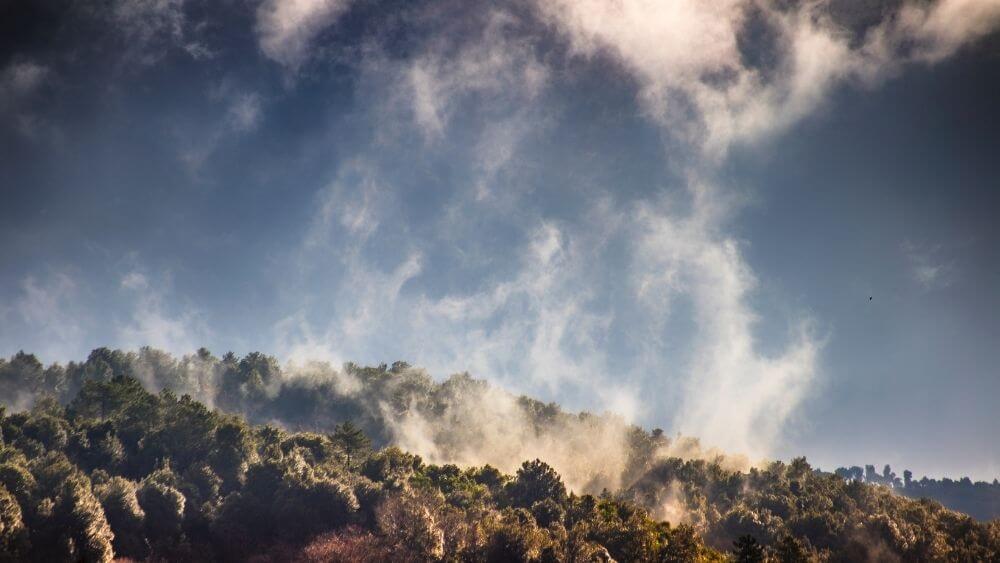How Do Clouds Form?

Liquid water is converted into a gas when water molecules evaporate under the influence of energy from a heat resource, such as the Sun or a fire. The water is converted into water vapour i.e., the state changes from that of a liquid to a gas. In this process of conversion from liquid to gas, the water molecules take up the heat to form water vapour; when the water vapour cools down, it again turns back into the water.
The air can only hold to a certain amount of water vapour, depending on the warmth and heaviness of the air in a particular area. The higher the temperature, the more water vapour the air can hold on to. When the air holds the maximum amount of water vapour it is capable of holding, under the given atmospheric conditions, it is said to be saturated.
What if air saturated with water vapour cools down or the atmospheric pressure falls?
Beyond a certain upper limit, air can no longer hold water vapour and just find a way to release it. The extra amount is converted from a gas into a liquid or ice. The formation of water from a gas to a liquid is known as condensation, and when gas is directly converted into a solid, it is known as deposition. These processes together result in the formation of clouds.
How does condensation occur?
When the water vapour comes in contact with airborne particles such as dust, salt crystals, bacteria, fungi, ash, etc. floating about in the air, the molecules have a surface on which they can undergo condensation. During this process, the water vapour can be either converted into water droplets or into ice crystals.
The build-up of such droplets is actually a cloud.
When a cloud becomes heavy with a large number of water droplets/ice crystals and it can no longer hold on to it, rainfall/snowfall occurs.
Now, it is a common misconception that clouds are only formed high up in the skies. In fact, under the right conditions, cloud formation occurs close to the ground and then it is called fog.
This is the basic concept behind the formation of a cloud. However, it is important to note that clouds are very complex and are in fact one of the trickiest aspects of climate science. Clouds should not be taken lightly!






Responses